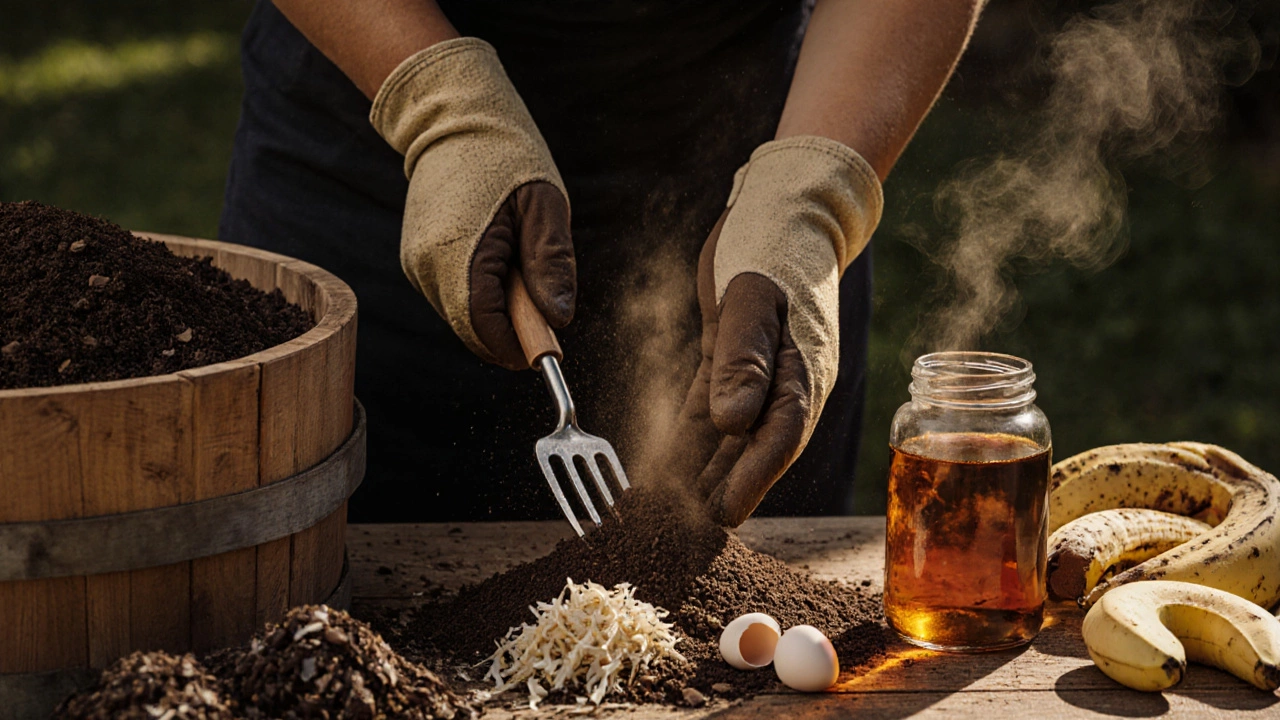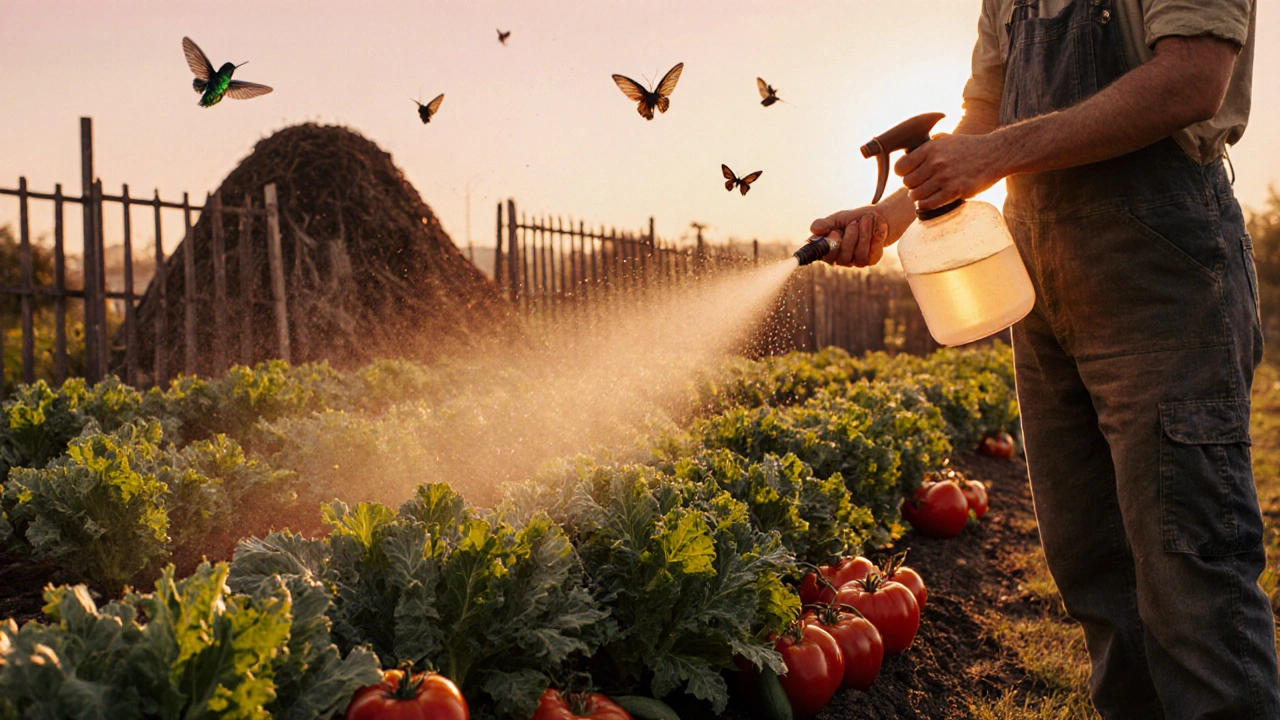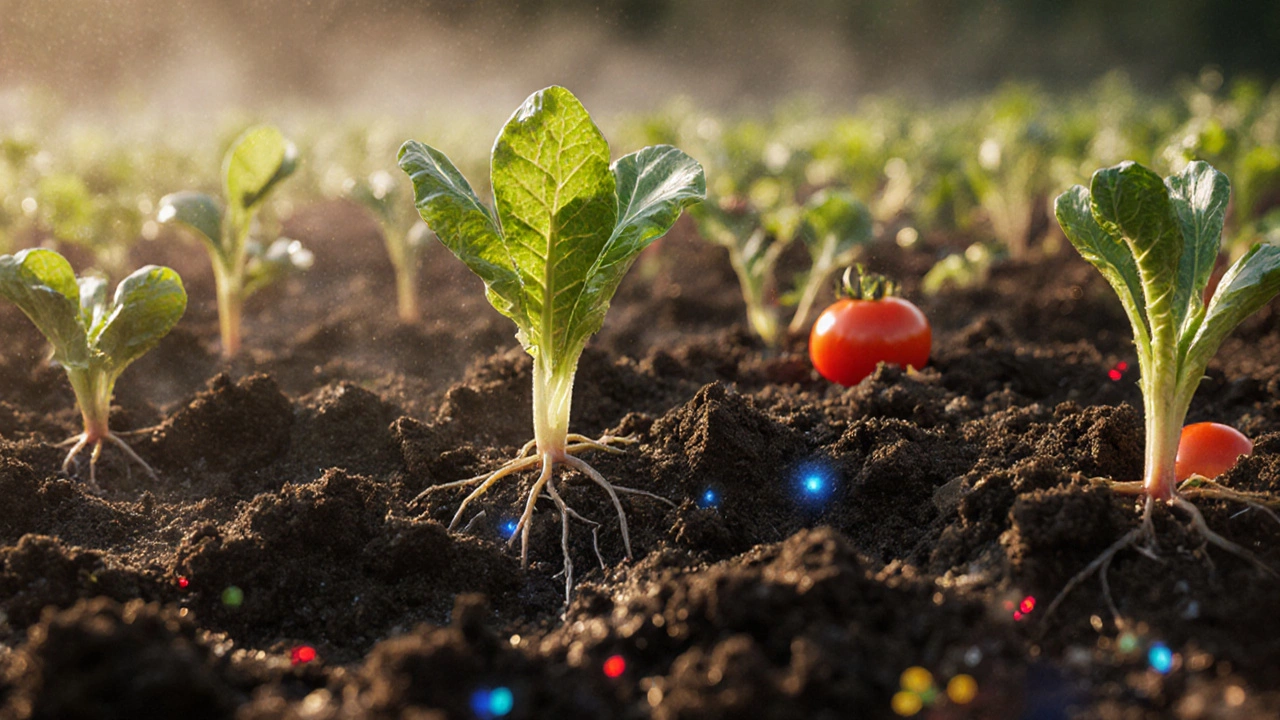Every gardener knows the frustration of limp lettuce or stunted tomatoes. The root cause is often the same - the soil isn’t feeding the plants the right nutrients at the right time. Instead of splurging on commercial blends, you can create a homemade fertilizer that’s cheap, effective, and fully under your control.
Why Your Veggies Need Balanced Nutrition
Plants grow by pulling three primary nutrients from the soil: nitrogen (N), phosphorus (P), and potassium (K). Nitrogen fuels leaf growth, phosphorus promotes root and flower development, and potassium strengthens overall plant health and disease resistance. In a vegetable garden a cultivated space where a variety of edible plants are grown for personal consumption, an imbalance in any of these elements shows up quickly as yellowing leaves, poor fruit set, or weak stems.
Core Ingredients You Can Find at Home
Before you mix any formula, understand the nutrient profile of each kitchen or yard waste item. Below are the most reliable sources, each introduced with microdata so search engines can recognize them as key concepts.
- Compost decomposed organic matter that improves soil structure and supplies a slow‑release mix of nutrients - a universal base for any fertilizer recipe.
- Worm castings nutrient‑rich excrement from earthworms that boosts microbial activity and supplies readily available NPK - add a handful for a quick nutrient kick.
- Coffee grounds used coffee residues that are high in nitrogen and improve soil aeration - perfect for leafy greens.
- Eggshells crushed calcium carbonate that raises soil pH and strengthens cell walls - ideal for fruit‑bearing plants.
- Banana peels rich in potassium and phosphorus, great for root and fruit development - chop and bury around plants.
- Fish emulsion a liquid fertilizer made from fish waste, high in nitrogen and trace minerals - use as a foliar spray for fast results.
Five Proven Homemade Fertilizer Recipes
Each recipe below targets a specific growth stage or crop type. Adjust quantities based on garden size; the ratios stay the same.
1. All‑Purpose Compost & Worm Castings Mix
- Combine 4 parts compost with 1 part worm castings in a large bucket.
- Moisten to the consistency of a damp sponge.
- Apply 1-2 inches on top of garden beds and work lightly into the top 2 inches before planting.
This blend offers a balanced NPK (~2‑1‑2) and improves soil texture, making it suitable for almost any vegetable.
2. Nitrogen Boost for Leafy Greens
- Gather 2 cups of dried coffee grounds and 1 cup of finely shredded grass clippings (optional).
- Mix thoroughly and sprinkle ¼ cup per square foot around lettuce, spinach, or kale.
- Water well to release nitrogen.
The grounds supply a quick nitrogen surge, helping leaves stay dark green and tender.
3. Potassium Power for Tomatoes & Peppers
- Dry 6 banana peels in the oven at 120 °C for 30 minutes, then grind into a powder.
- Combine 1 cup of the powder with 2 tbsp of wood ash (if available).
- Work the mixture into the planting hole for each tomato or pepper plant.
Potassium supports fruit set and reduces blossom‑end rot.
4. Calcium Boost for Fruit‑Bearing Plants
- Rinse and crush 1 cup of eggshells until they resemble fine sand.
- Spread the sand around the base of cucumbers, zucchini, and strawberries.
- Water thoroughly; the calcium slowly leaches into the soil.
Calcium prevents tip burn and strengthens vascular tissue.
5. Fast‑Acting Liquid Boost
- Mix 2 tbsp of fish emulsion with 1 gallon of water.
- Apply as a foliar spray every 2 weeks during the veg growth phase.
- For a boost during fruiting, double the fish emulsion to 4 tbsp per gallon.
Liquid delivery ensures nutrients are quickly absorbed, especially useful in cooler, damp climates like Manchester.

Application Timing and Rates
Applying fertilizer at the wrong time can waste nutrients or even harm plants. Follow these simple rules:
- Pre‑planting: Work any dry amendments (compost, castings, eggshells) into the top 6‑8 inches.
- Early growth: Use nitrogen‑rich mixes (coffee grounds, fish emulsion) to encourage leaf development.
- Flowering & fruiting: Switch to potassium‑heavy blends (banana peel powder, wood ash) and add calcium for fruit quality.
- Post‑harvest: Return plant residues to the compost pile to recycle nutrients.
Remember to water after each application; water moves soluble nutrients into the root zone and reduces the risk of leaf burn.
Common Mistakes and How to Avoid Them
- Over‑watering can leach nutrients beyond the root zone. Stick to the recommended moisture level - soil should feel like a wrung‑out sponge.
- Using too much nitrogen on fruiting crops leads to lush foliage but poor yields. Shift to potassium‑rich mixes once flowers appear.
- Ignoring pH can lock nutrients. Test soil annually; if it’s below 6.0, add more eggshells or lime. If above 7.5, incorporate pine needles or peat moss.
- Applying dry amendments in dry soil results in clumping. Lightly mist the soil before spreading or mix with compost first.

Quick Reference Checklist
- Test soil pH and texture before starting.
- Gather core ingredients: compost, worm castings, coffee grounds, eggshells, banana peels, fish emulsion.
- Choose recipe based on crop stage (leafy, fruiting, root).
- Apply at recommended rates; always water after.
- Rotate ingredients each season to maintain soil biodiversity.
Comparison of Top Homemade Fertilizer Recipes
| Recipe | Main Nutrient Focus | Approx. NPK Ratio | Best Veggies | Application Rate |
|---|---|---|---|---|
| All‑Purpose Compost & Worm Castings | Balanced growth | 2‑1‑2 | Most vegetables | 1‑2 in/ topsoil |
| Nitrogen Boost (Coffee Grounds) | Leaf vigor | 4‑0‑0 | Lettuce, spinach, kale | ¼ cup per sq ft |
| Potassium Power (Banana Peel) | Fruit set | 0‑1‑3 | Tomatoes, peppers, cucumbers | 1 cup per plant |
| Calcium Boost (Eggshells) | Cell strength | 0‑0‑0 (calcium) | Strawberries, beans, brassicas | 1 cup per plant |
| Liquid Fish Emulsion | Quick nitrogen | 5‑1‑1 (liquid) | All vegs, especially early season | 2‑4 Tbsp per gallon water |
Frequently Asked Questions
Can I use fresh coffee grounds directly?
Yes, but spread them thinly and water right away. Thick layers can create a slimy barrier that blocks air flow.
How often should I add compost?
In a temperate climate like Manchester, incorporating a fresh compost layer once per growing season (early spring) keeps the soil fertile.
Is fish emulsion safe for kids and pets?
It’s odor‑less when diluted as instructed and poses no toxicity. Just keep the concentrate out of reach.
What if my soil is already alkaline?
Limit calcium‑rich additions like eggshells and consider adding a thin layer of peat moss or pine needles to gently lower pH.
Do I need to sterilize my compost?
No. Properly managed compost naturally suppresses pathogens. Avoid adding meat or dairy to keep it weed‑free.
With these recipes and best‑practice tips, you can turn kitchen scraps and garden waste into a powerhouse fertilizer that feeds your vegetables, saves money, and keeps your garden eco‑friendly. Happy growing!

